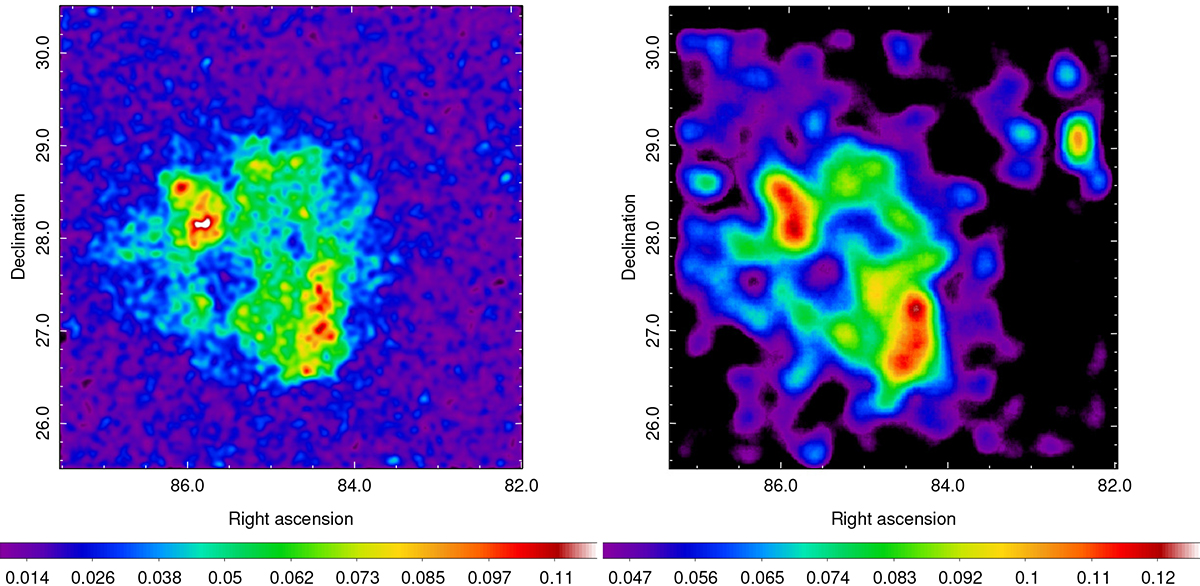Fig. 1.

Download original image
First detection of significant X-ray emission from the entire extension of the S147 with eROSITA and a side-by-side comparison of the eROSITA and ROSAT views of the remnant. Left panel: eRASS:4 exposure-corrected intensity sky map in the 0.5–1.0 keV energy band, in units of counts per pixel with a pixel size of 10″. All point sources are filtered out, and the image is convolved with a σ = 100″ Gaussian aimed at enhancing the visibility of the diffuse X-ray emission. Right panel: ROSAT intensity sky map in the 0.4–2.4 keV energy band (medium RASS band). The ROSAT image is built on a different energy range that maximizes contrast between on-source and background regions, allowing fainter structures to be detected. The image, with a pixel size of 45″, is convolved with a σ = 6.4′ Gaussian to enhance the visibility of the diffuse emission from the location of the remnant. Except for HMXB 1A 0535+262 and the emission associated with the associated pulsar, which were treated independently and effectively masked out from the image, all remaining point sources were not removed. Their proper masking requires a substantially larger extraction radius, which heavily affects the faint diffuse emission originating from the remnant.
Current usage metrics show cumulative count of Article Views (full-text article views including HTML views, PDF and ePub downloads, according to the available data) and Abstracts Views on Vision4Press platform.
Data correspond to usage on the plateform after 2015. The current usage metrics is available 48-96 hours after online publication and is updated daily on week days.
Initial download of the metrics may take a while.


